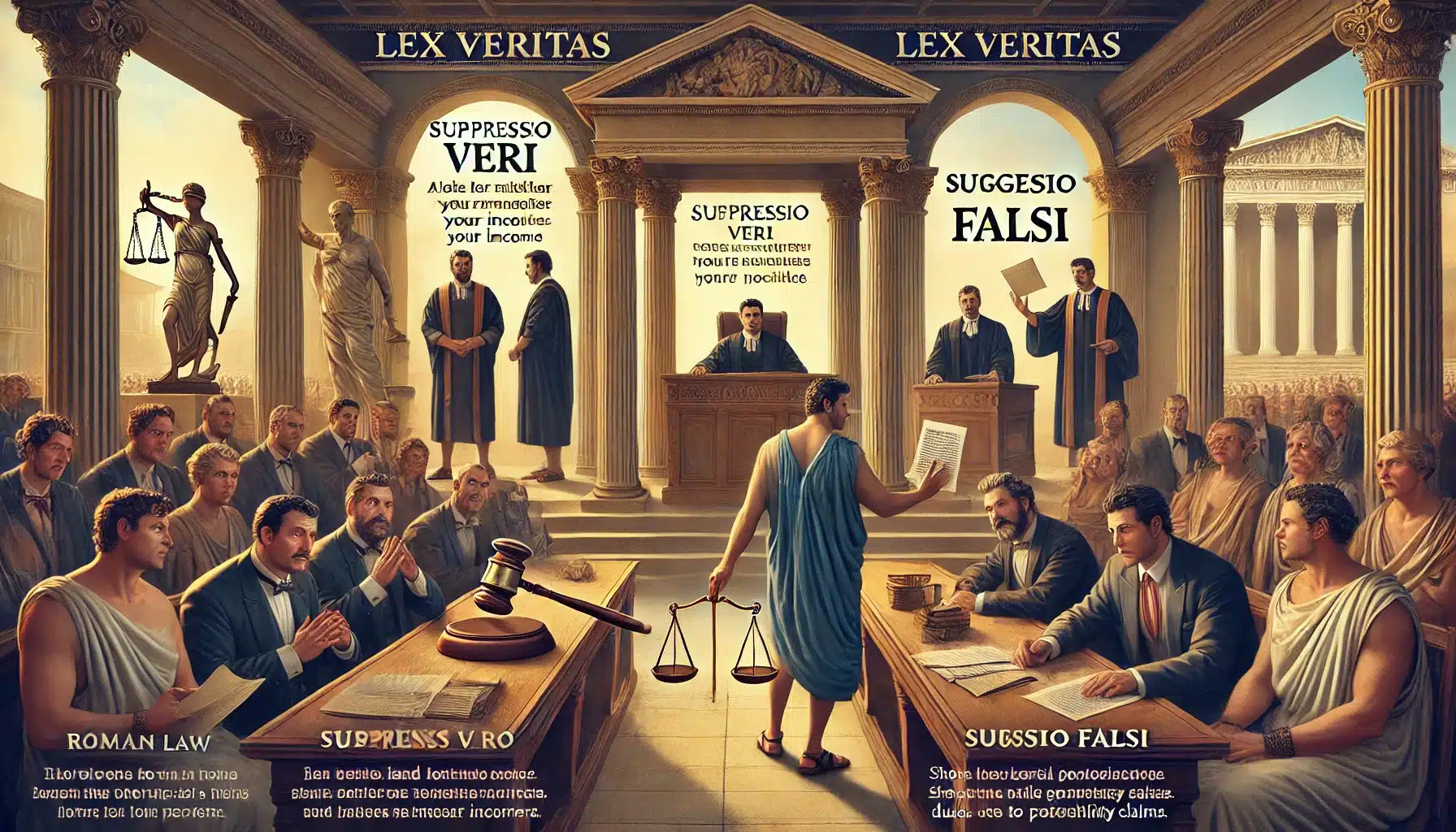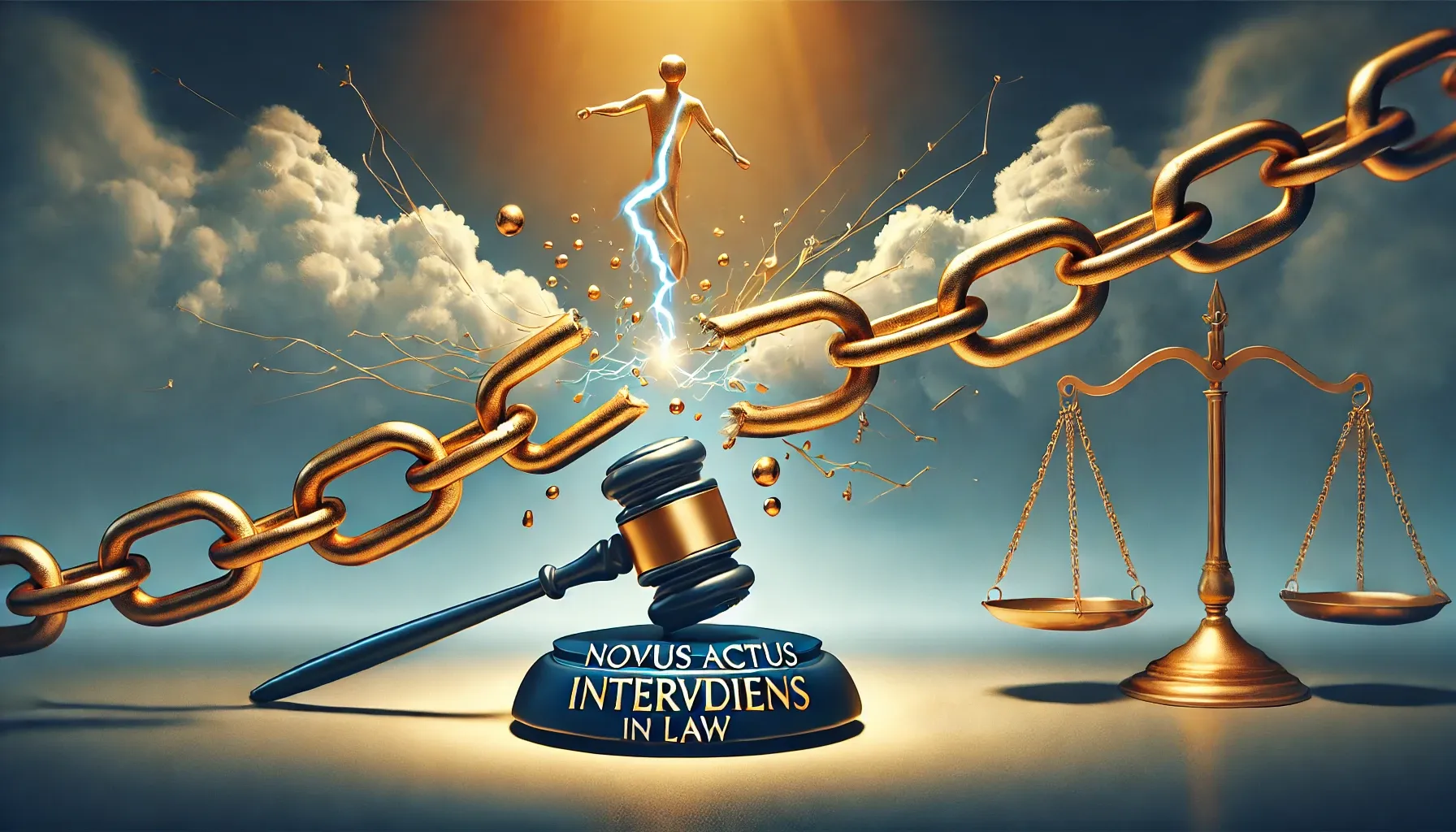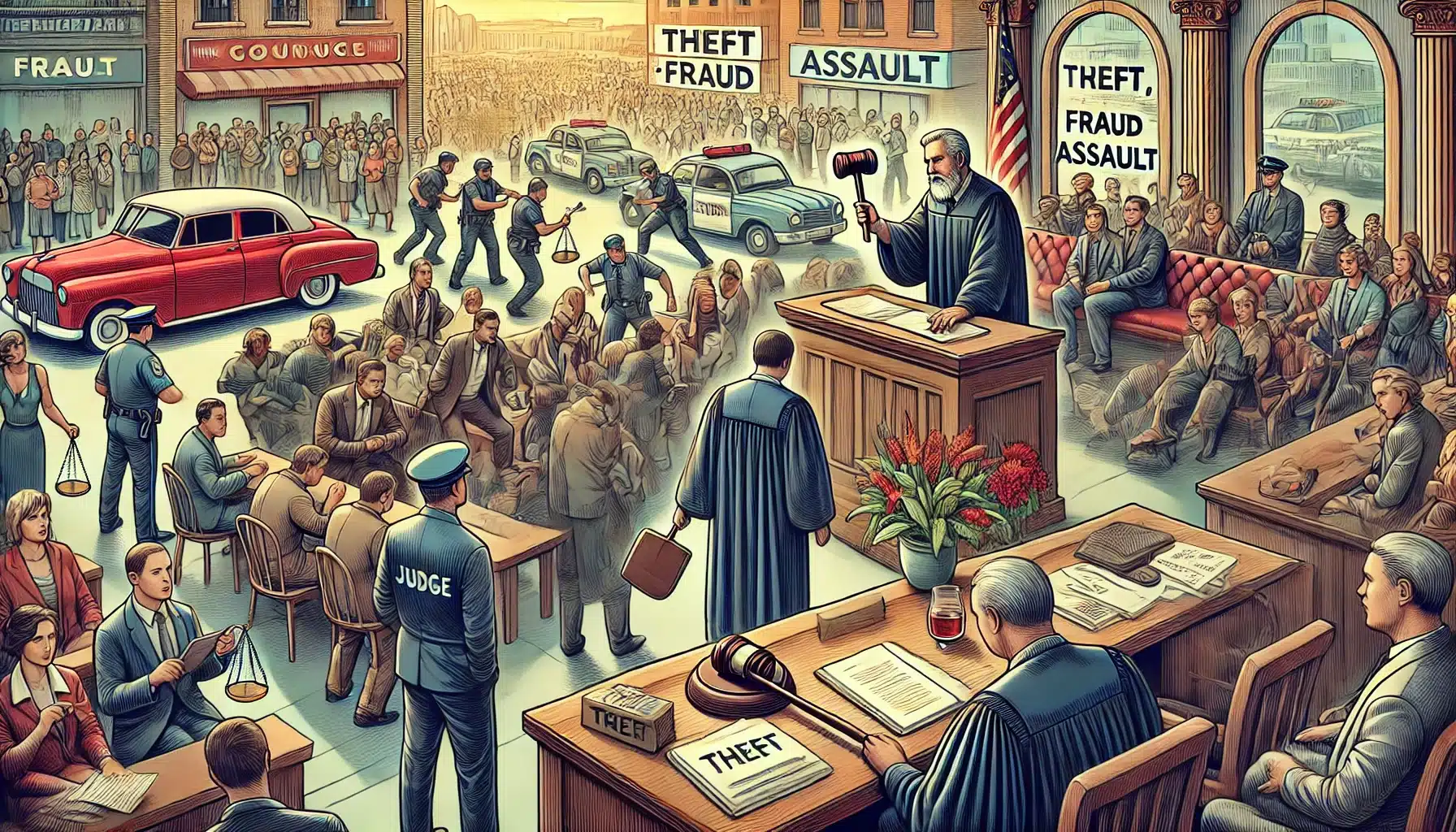The legal maxim “suppressio veri or suggestio falsi” signifies that the suppression of truth is equivalent to the suggestion of falsehood. This principle holds that if either the omission of relevant facts or the presentation of false information regarding a material fact in a contract can be proven

Automated compliance and legal drafting
Definition
The legal maxim “suppressio veri or suggestio falsi” literally means “suppression of truth is equivalent to suggestion of false.”
Meaning
- It is a rule of equity, as well as of law, that a suppressio veri is equivalent to a suggestio falsi; and where either the suppression of the truth or the suggestion of what is false can be proved, in a fact material to the contract, the party injured may have relief against the contract.
- This maxim serves as both a rule of equity and law, signifying that when either the suppression of truth or the suggestion of a false statement is proven regarding a material fact of a case, the injured party can seek relief. Both actions are deemed equally wrongful. This principle is particularly relevant for rescinding contracts, ensuring that all material facts are disclosed when forming any agreement. Thus, it underscores the principle of good faith in general contracts and in specific legislations like insurance contracts.
- Suppressio veri, meaning “suppression of the truth,” involves the deliberate omission of relevant information that could influence another party’s decision-making process. It is a form of passive deception where an individual fails to disclose critical facts, thereby creating a false impression.
- Suggestio falsi, or “suggestion of falsehood,” on the other hand, is an active form of deception where false information is presented with the intent to mislead. This involves explicitly stating untruths or creating a misleading narrative through false assertions.
- While both concepts involve deceit, the key distinction lies in the manner of deception: suppressio veri through omission and suggestio falsi through commission.
Origin
The roots of suppressio veri or suggestio falsi can be traced back to Roman law, where these principles were integral to the legal and moral codes. The Romans recognized the importance of honesty and transparency in transactions and interactions, embedding these principles in their legal system to ensure fair dealings.
These concepts were later adopted and adapted by various legal systems, including common law and civil law traditions. In common law, the principles have been applied in cases of fraud, misrepresentation, and non-disclosure, forming the basis for numerous legal precedents.
Applicability
1. Tax Law
In the case of Dilip N. Shroff v. Joint Commissioner Of Income Tax, Mumbai And Another[1] The Supreme Court held that “Concealment of income” and “furnishing of inaccurate particulars” are distinct concepts, though both involve deliberate actions by the assessee. Concealment of income refers to the intentional hiding of income to evade tax obligations, while furnishing inaccurate particulars involves providing false or misleading information in tax returns or documents.
A mere omission or negligence does not constitute a deliberate act of suppressio veri or suggestio falsi. In tax contexts, Suppressio veri can be equated to concealment of income, as it involves deliberately hiding material facts. Conversely, suggestio falsi aligns with furnishing inaccurate particulars, where false information is deliberately presented.
2. Contract Law
In contractual agreements, the duty of good faith and fair dealing mandates that parties act honestly and transparently. Suppression of the truth and Suggestion of falsehood can render contracts voidable, as they undermine the mutual consent essential for a valid agreement. For example, if one party conceals material information or provides false information, the other party may have grounds to rescind the contract and seek damages.
In the case of Nottingham Brick & Tile Co v. Butler[2], the buyer of land inquired whether there were any restrictive covenants on the property. The seller’s solicitor replied that he did not know of any such covenants. However, the solicitor did not disclose that he had not reviewed the relevant documents. The court determined that although the solicitor’s statement was literally true, it constituted misrepresentation because there were, in fact, restrictive covenants on the land. Consequently, the contract could be rescinded.
3. Tort Law
In tort law, suppressio veri and suggestio falsi are crucial to claims of fraud and deceit. A plaintiff usually needs to prove that the defendant intentionally concealed or misrepresented material facts, resulting in harm or loss. Courts assess the nature of the deception, the intent behind it, and its impact on the plaintiff to determine liability and appropriate remedies.
In the case of Doyle v. Olby[3] Doyle purchased a business from the defendant based on claims of its profitability, but subsequently incurred losses, the court held that Doyle was entitled to recover the price he paid for the business as well as any additional losses he suffered. The party responsible for the misrepresentation was found liable not only for the direct losses incurred but also for any missed opportunities that Doyle would have had if the business had been as profitable as represented.
4. Legal Proceedings
This maxim is applicable in legal proceedings as well. The courts have used this maxim numerous times in order to deliver justice. In the case of K.K. Anathan Pillai v. State of Kerala[4], during an ex parte proceeding, the party that appeared failed to disclose all material facts to obtain a stay order. When the court later discovered this, it ruled that the stay order issued based on untrue facts was invalid.
In the case of Nand Lal v. State of Jammu & Kashmir[5], the court held that if relevant facts are not correctly and precisely stated in the petition, the writ petition would be dismissed based on the application of this maxim, without considering the merits of the case.
In the case of Ravindra Ramesh Barkul v. Executive Engineer[6], it was observed that before finding a person guilty of an offense, this maxim should be applied to confirm that the person had knowledge of the fact in question.
5. Other Applications
- Modern consumer protection laws are significantly shaped by the maxim. These regulations mandate that businesses provide accurate and comprehensive information about their products and services. Misleading advertisements, false claims, and the failure to disclose critical information can lead to legal actions, fines, and reputational damage.
- The rapid spread of information on social media platforms significantly amplifies the effects of the maxim. Misinformation, whether by omitting critical context or disseminating false information, can lead to extensive social, political, and economic consequences. The viral nature of social media ensures that such misinformation can quickly reach a large audience, exacerbating its impact and complicating efforts to address and correct it.
- Online advertisements and influencer endorsements are closely examined for accuracy and transparency. Misleading claims about products or services, whether through omission of critical information or false statements, can result in regulatory actions and a loss of consumer trust.
[1] 2007 SCC 6 329.
[2] (1886) 16 QBD 778.
[3] [1969] 2 QB 158.
[4] AIR 1968 Ker 234.
[5] AIR 1960 JK 19.
[6] 2017 SCC ONLINE BOM 8475.




